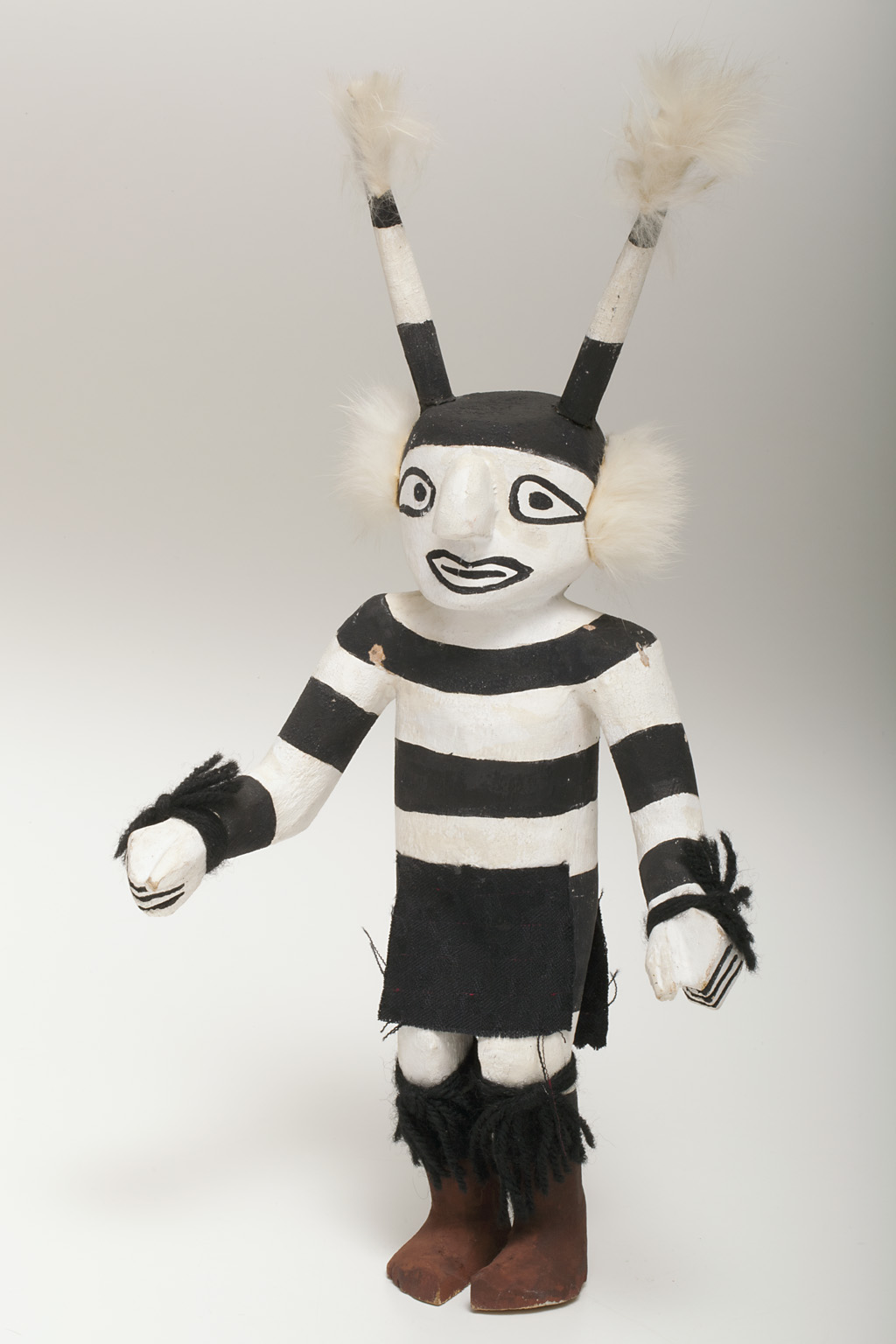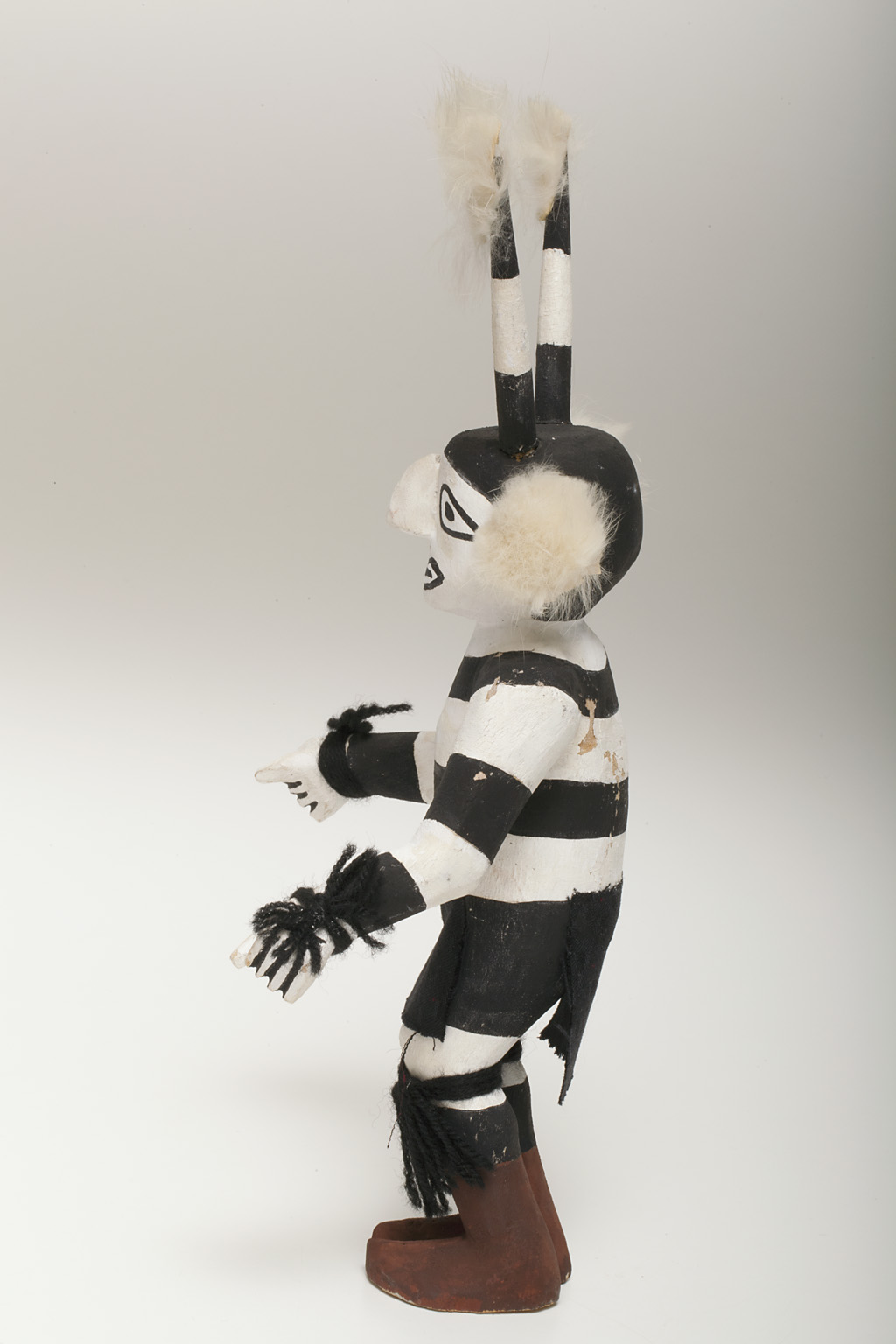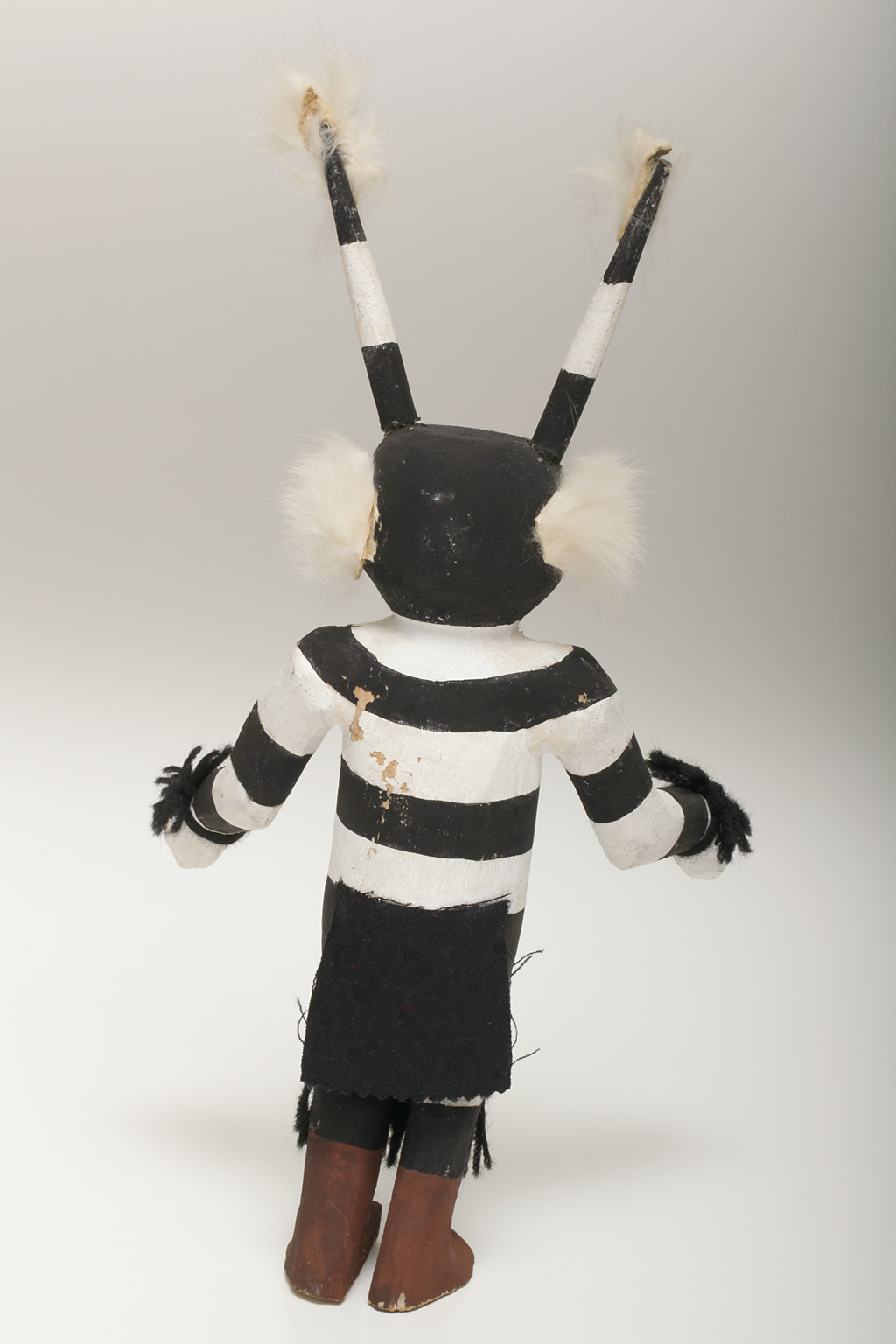koshari (Hano clown katsina), unrecorded Hopi artist
Artwork Overview
unrecorded Hopi artist, artist
koshari (Hano clown katsina),
late 1800s–1999
Where object was made: United States
Material/technique: carving; wood; yarn; paint; cloth; rabbit fur
Dimensions:
Object Height/Width/Depth (Height x Width x Depth): 34.5 x 16.5 x 12 cm
Object Height/Width/Depth (Height x Width x Depth): 13 9/16 x 6 1/2 x 4 3/4 in
Object Height/Width/Depth (Height x Width x Depth): 34.5 x 16.5 x 12 cm
Object Height/Width/Depth (Height x Width x Depth): 13 9/16 x 6 1/2 x 4 3/4 in
Credit line: Gift from the Menninger Foundation
Accession number: 2007.5798
Not on display
If you wish to reproduce this image, please submit an image request




